harvarduniversity
Latest
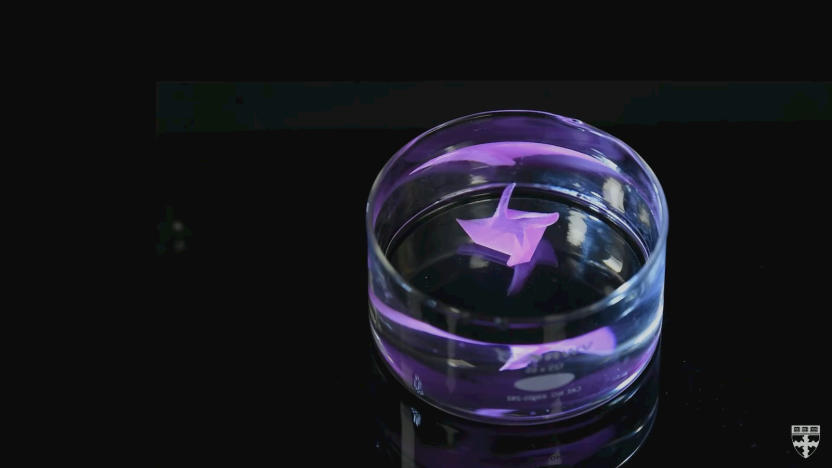
Harvard created a wool-like 3D-printable material that can shape shift
Researchers believe it could reduce waste in the fashion industry.

Sound-based liquid printing could lead to new designer drugs
Liquid printing is virtually ubiquitous thanks to inkjets, but the materials can only be so sluggish before it stops working. What if you wanted to print a biological material, or even liquid metal? That might happen soon. Harvard researchers have developed a technique that uses acoustic levitation to print droplets of materials that wouldn't normally be so accommodating, including metal and honey. The approach uses a subwavelength acoustic resonator to create a sound field that pulls substances from the printer nozzle at over 100G -- even some of the most viscous materials can't resist that tug. You can control the size of the droplets using the amplitude of the soundwaves, and place them anywhere you like.
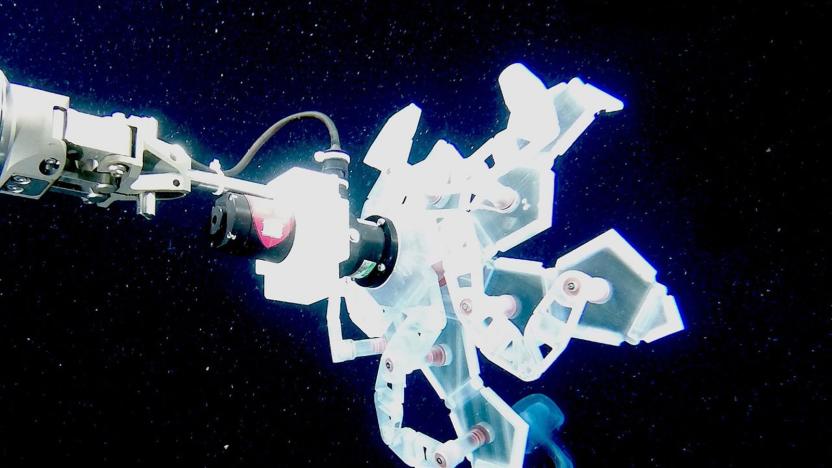
Harvard's robot arm can grab squishy sea animals without hurting them
As you might imagine, you can't just grab extra-soft sea creatures like jellyfish or octopuses when you want to study them. Not if you want them to remain intact, anyway. Thankfully, researchers at Harvard's Wyss Institute have a far more delicate solution. They've created a robot arm (the RAD sampler) whose petal-like fingers can quickly form a ball shape around an animal, capturing it without risking any harm. It's simpler than it looks -- it uses just a single motor to drive the entire jointed structure, so it's easy to control and easier still to repair if something breaks.
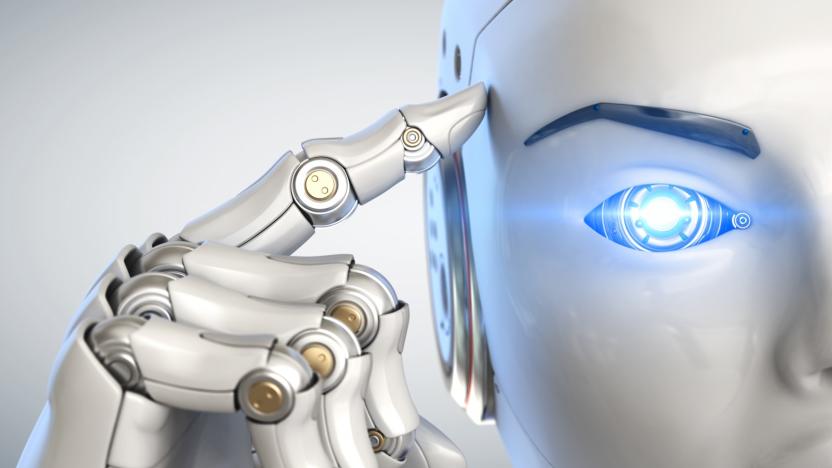
Modern copyright law can't keep pace with thinking machines
This past April, engineer Alex Reben developed and posted to YouTube, "Deeply Artificial Trees", an art piece powered by machine learning, that leveraged old Joy of Painting videos. It generate gibberish audio in the speaking style and tone of Bob Ross, the show's host. Bob Ross' estate was not amused, subsequently issuing a DMCA takedown request and having the video knocked offline until very recently. Much like Naruto, the famous selfie-snapping black crested macaque, the Trees debacle raises a number of questions of how the Copyright Act of 1976 and DMCA's Fair Use doctrine should be applied to a rapidly evolving technological culture, especially as AI and machine learning techniques approach ubiquity.

Corkscrew light beams could lead to practical quantum computers
Who said light only had to travel in boring waves or particles? Not Harvard. Its researchers have found a way to spin light into complex states that promise breakthroughs in multiple fields. They've built metasurfaces whose elaborate optics combine two kinds of light momentum (orbital angular and spin angular) to send light into corkscrews, spirals or even fork-like shapes. If you want to change the light state, you just need to change the polarization of that light.

Voter registration websites make some records vulnerable
Those government websites that allow you to change voter registration details might seem convenient, but they also make you vulnerable to ID theft and could be used to manipulate elections. That's what a team of Harvard researchers found when they took a closer look at those types of websites that 35 states and Washington, DC provided to their residents during the 2016 Presidential elections. They determined that the websites give attackers an easy way to mess with election proceedings, similar to what might have happened in Riverside County, California.

Listening to starlight: Our ongoing search for alien intelligence
Six hours a day, seven days a week, for four straight months. That's how long radio astronomer Frank D. Drake pointed the 26-meter telescope at the National Radio Astronomy Observatory (NRAO) research facility in Green Bank, West Virginia, toward the heavens, looking for signs of intelligent life beyond Earth. He dubbed his efforts Project Ozma, in honor of the Queen of Oz from L. Frank Baum's famed children's book series.
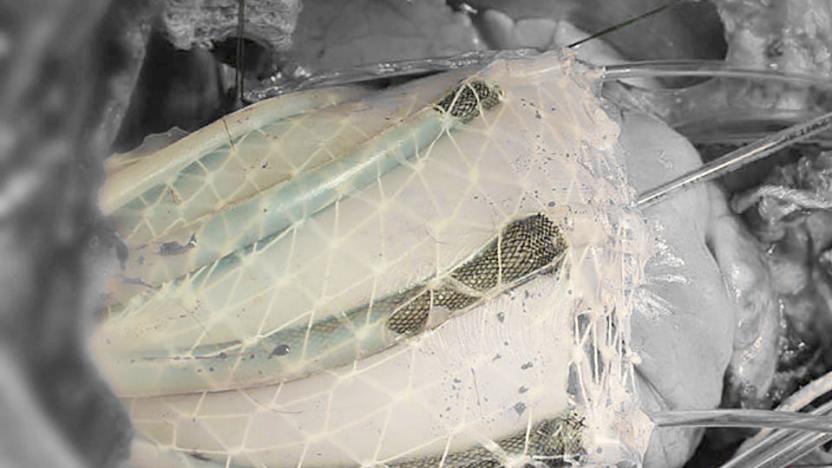
Soft robot wraps around your heart to help it beat
Researchers from Harvard University and Boston Children's Hospital have developed a breakthrough "soft robot" device that might improve your odds of surviving a heart attack. Unlike mechanical devices inserted into heart valves, it's wrapped externally around the heart, where it pumps and twists to assist cardiovascular function. "Most people with heart failure do still have some function left; one day the robotic sleeve may help their heart work well enough that their quality of life can be restored," says co-author and cardiothoracic surgeon Frank Pigula.

Exotic bird inspires cheaper light-based camouflage design
Colors usually come from pigments or dyes, but are also created when light is refracted and reflected by microscopic structures. Those iridescent hues, known as "structural coloration," are often seen in nature on bird or butterfly wings. While durable and potentially useful for military and industrial applications, it's difficult and pricey to produce. However, Harvard University researchers have developed a robust and inexpensive way to build materials with structural coloring that could be used for camouflage, solar cells and optical switches.

ICYMI: The first autonomous robotic octopus has arrived
try{document.getElementById("aol-cms-player-1").style.display="none";}catch(e){}Today on In Case You Missed It: Harvard Researchers created the world's first fully-autonomous octo-robot, something that runs on hydrogen peroxide and moves by pumping oxygen into its tentacles. We'd be afraid, except it looks so similar to what research vessel EV Nautilus just spotted in the sea that we can't help but be charmed instead. If you're more into nature as medicine, you may be interested in the study that showed houseplants may be better at removing air pollution than many ventilation systems.

ICYMI: Cellphone motor as mic and fuel from sunlight
try{document.getElementById("aol-cms-player-1").style.display="none";}catch(e){}Today on In Case You Missed It: Researchers created a hack that lets a smartphone's vibration motor act as a microphone, picking up conversations unbeknownst to the user. Harvard University folk created fuel using artificial photosynthesis that is triple as effective as previous systems, making gas out of sunlight, CO2 and water. And finally, YouTube user BOOM LLC Robotater has a pretty entertaining potato video on the site; if you're looking for the case that lets you switch an iPhone to Android, that's here. As always, please share any great tech or science videos you find by using the #ICYMI hashtag on Twitter for @mskerryd.
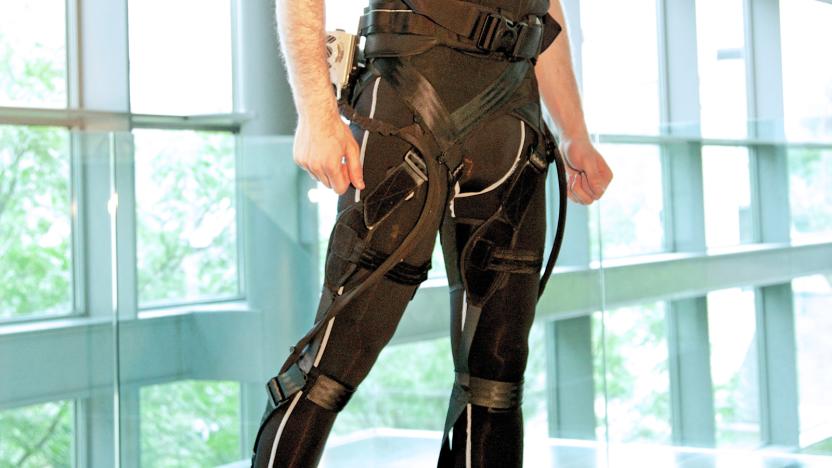
Harvard engineers designed a 'soft wearable robot'
A team of engineers from Harvard University's Wyss Institute for Biologically Inspired Engineering have moved one step closer to a consumer version of a soft, assistive exosuit that could help patients with lower limb disabilities walk again. The Wyss Institute announced today that the university is collaborating with ReWalk Robotics to bring its wearable robotic suit to market.
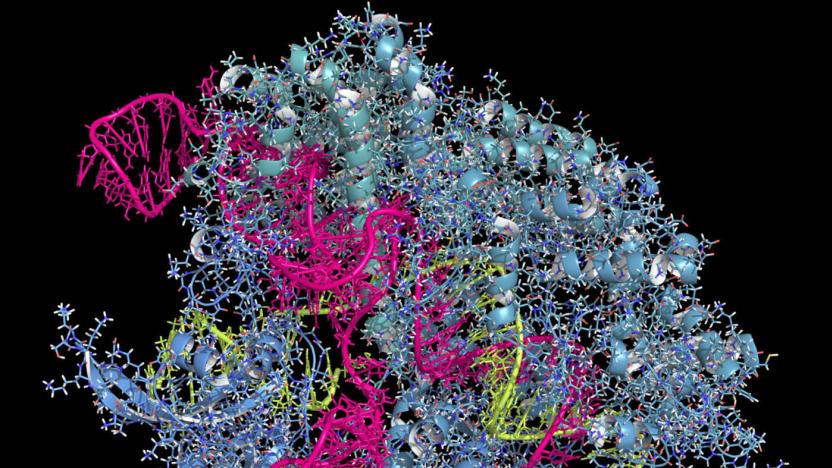
Gene editing discovery might treat many more diseases
In theory, gene editing could eliminate genetic diseases by correcting the flaws in your DNA. However, there's one big obstacle: the current CRISPR technique has trouble modifying individual DNA letters. As most genetic conditions revolve around mutations of those single letters, that leaves most conditions untreatable. However, Harvard researchers might have just made a breakthrough that turns gene editing into a true disease-ending weapon.

Pop-up sensor would give robot surgeons a sense of touch
Robotic surgery is no longer the stuff of science fiction. However, these robots can't really feel their way around -- the need for super-small mechanisms rules out existing approaches to touch. That's where Harvard researchers might come to save the day. They've developed a pop-up sensor whose four layers collapse to a tiny footprint (just a tenth of an inch) when necessary, but expand into a 3D sensor thanks to a built-in spring. The design is extremely sensitive, too, with a light intensity sensor that can detected mere millinewtons of force.

Explore the world's economy in Harvard's trippy 3D map
Wrapping your head around the planet's economic activity isn't easy, even if you study economics for a living. However, Harvard's Owen Cornec (he of WikiGalaxy fame) believes he can help. He built the Globe of Economic Complexity, a web-based map that lets you explore Earth's economic relationships through 3D "confetti." It looks more than a little psychedelic, but it's incredibly detailed. You'll not only see the range of exports in a given country, but their volumes, their destinations and the intricate connections between products. Frankly, it could be helpful even if you're outside of academia -- it can provide important context for news stories and otherwise explain machinations that would normally remain confusing.

Prototype roboglove gives patients with weak grips a hand
For patients suffering from the effects of a stroke, ALS or muscular dystrophy, routine tasks like picking up a cup or grabbing a doorknob can be infuriatingly difficult. That's due to their lack of hand strength or fine motor control. However, this prototype "soft robotic" glove may soon restore their gripping abilities by doing the heavy squeezing for them. Developed by a research team at Harvard University, the glove is designed to augment the user's remaining hand strength and mobility. The device works by filling small water bladders located in each finger. When water from a reservoir on the wrist is pumped in, the fingers (and thumb) curl over in a grasping motion. Right now, that's all the glove is capable of doing. Still, that's enough for users to be able pick up and manipulate small objects they were not able to before.

Harvard engineering class tries to make the best BBQ smoker
As part of a 14-week-long assignment, 16 Harvard engineering students were given the task to create the perfect brisket. But what did they need to do that? A really, really good BBQ smoker. To build one, Engineering Sciences professor Kevin Parker landed his class a big-name client willing to fund the project: kitchen goods retailer Williams-Sonoma. The catch? It had to outdo the Big Green Egg -- a charcoal-powered kamado-styled ceramic smoker considered to be the best in the business. And, after months of working on it, the result was The Harvard Smoker, which is designed to consistently produce the best possible brisket. The contraption's hourglass shape is meant to spread heat evenly throughout the meat, while a slew of heat sensors send temperature readings to a smartphone -- and this becomes extremely important in what's typically a cooking process that takes 12 to 15 hours.

The building blocks of life found orbiting another star
Looks like NASA's Chief Scientist Ellen Stofan may have over-estimated how long it would take to find extraterrestrial organisms. For the first time in the history of astronomy, scientists have discovered two complex organic molecules, which is vital to the formation of life as we know it, outside of our solar system. Researchers at the Harvard-Smithsonian Center for Astrophysics in Cambridge, Massachusetts actually found three forms of cyanide -- specifically hydrogen cyanide (HCN), methyl cyanide (CH3CN), and cyanoacetylene (HC3N) -- circling a star known as MWC 480. These are the same sorts of chemicals (and in the same concentrations!) that were present in comets orbiting our own solar system back when life here got its start. And while cyanide is super-duper toxic to living organisms, it's absolutely necessary for life's formation. In short, this discovery is a huge deal because it means that the seeds of life aren't confined to Sol alone.

Harvard used cameras to track attendance without telling students
You've probably had professors that got on your case for missing class, but they don't hold a candle to what Harvard University's faculty tried this past spring. The institution conducted an experiment that used surveillance cameras to track attendance, snapping photos that a computer analyzed to determine the number of empty seats in a given lecture hall. While the system couldn't identify individual students, the school didn't tell the 2,000 people involved that they were under watch -- they had no way to object to the test.

Watch this soft robot walk through snow and get squished by a car
Soft robots aren't just supremely flexible; they can take quite a bruising, too. If you need proof, a team of Harvard and Cornell researchers has developed a rugged soft robot that can survive conditions which would wreck stiffer machines. As you'll see in the video below, the automaton's silicone shell has no trouble wading through snow, walking over fire and enduring the crush of a car's tires. It's a bit of a workhorse as well, with upgraded pneumatics that can carry loads up to about 18 pounds. This is still early technology -- the bot doesn't move quickly, and its battery lasts a mere two hours -- but it's proof that squishy robots are well-suited to working in dangerous situations.






